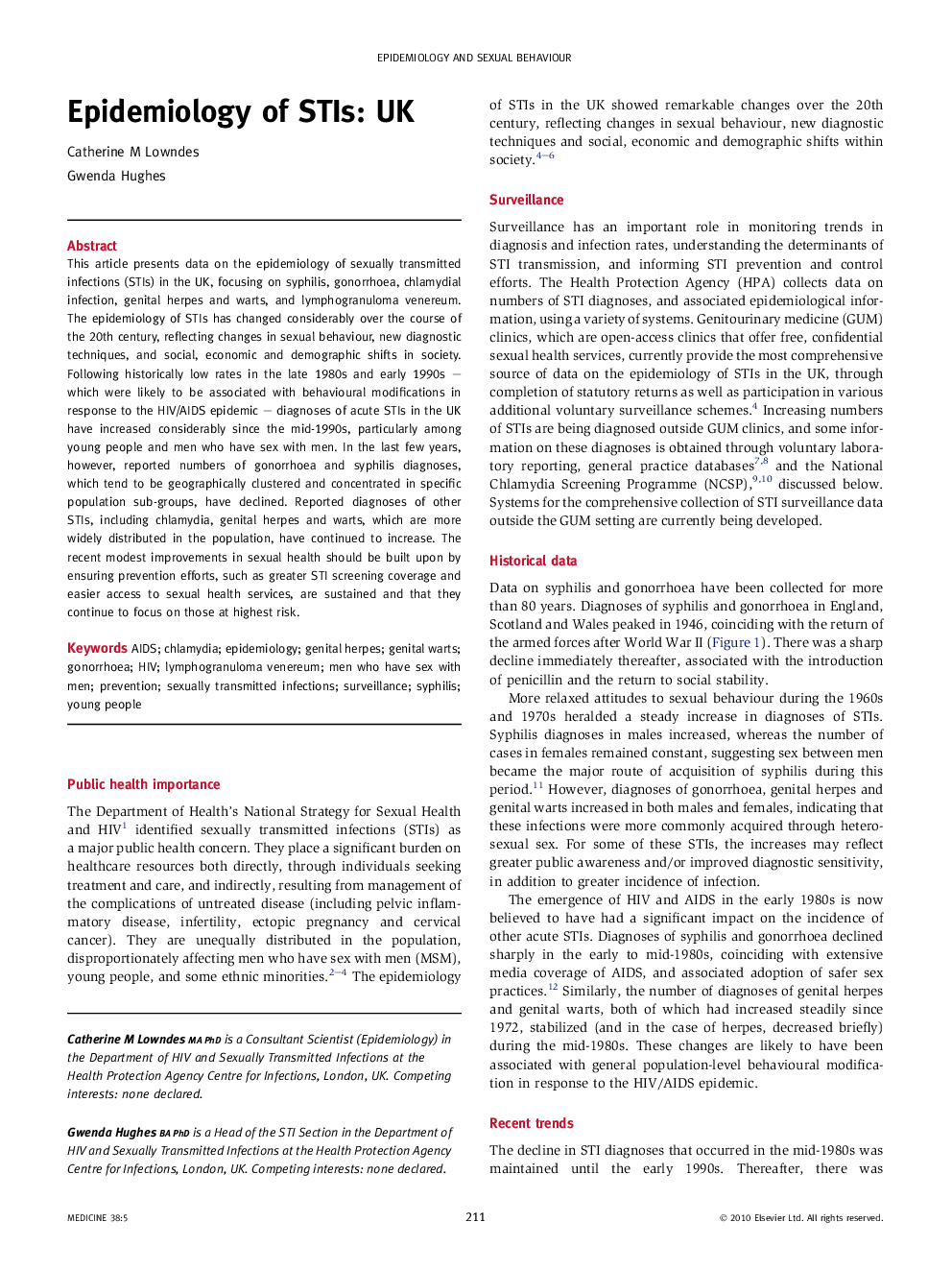| Article ID | Journal | Published Year | Pages | File Type |
|---|---|---|---|---|
| 3804941 | Medicine | 2010 | 5 Pages |
This article presents data on the epidemiology of sexually transmitted infections (STIs) in the UK, focusing on syphilis, gonorrhoea, chlamydial infection, genital herpes and warts, and lymphogranuloma venereum. The epidemiology of STIs has changed considerably over the course of the 20th century, reflecting changes in sexual behaviour, new diagnostic techniques, and social, economic and demographic shifts in society. Following historically low rates in the late 1980s and early 1990s – which were likely to be associated with behavioural modifications in response to the HIV/AIDS epidemic – diagnoses of acute STIs in the UK have increased considerably since the mid-1990s, particularly among young people and men who have sex with men. In the last few years, however, reported numbers of gonorrhoea and syphilis diagnoses, which tend to be geographically clustered and concentrated in specific population sub-groups, have declined. Reported diagnoses of other STIs, including chlamydia, genital herpes and warts, which are more widely distributed in the population, have continued to increase. The recent modest improvements in sexual health should be built upon by ensuring prevention efforts, such as greater STI screening coverage and easier access to sexual health services, are sustained and that they continue to focus on those at highest risk.
